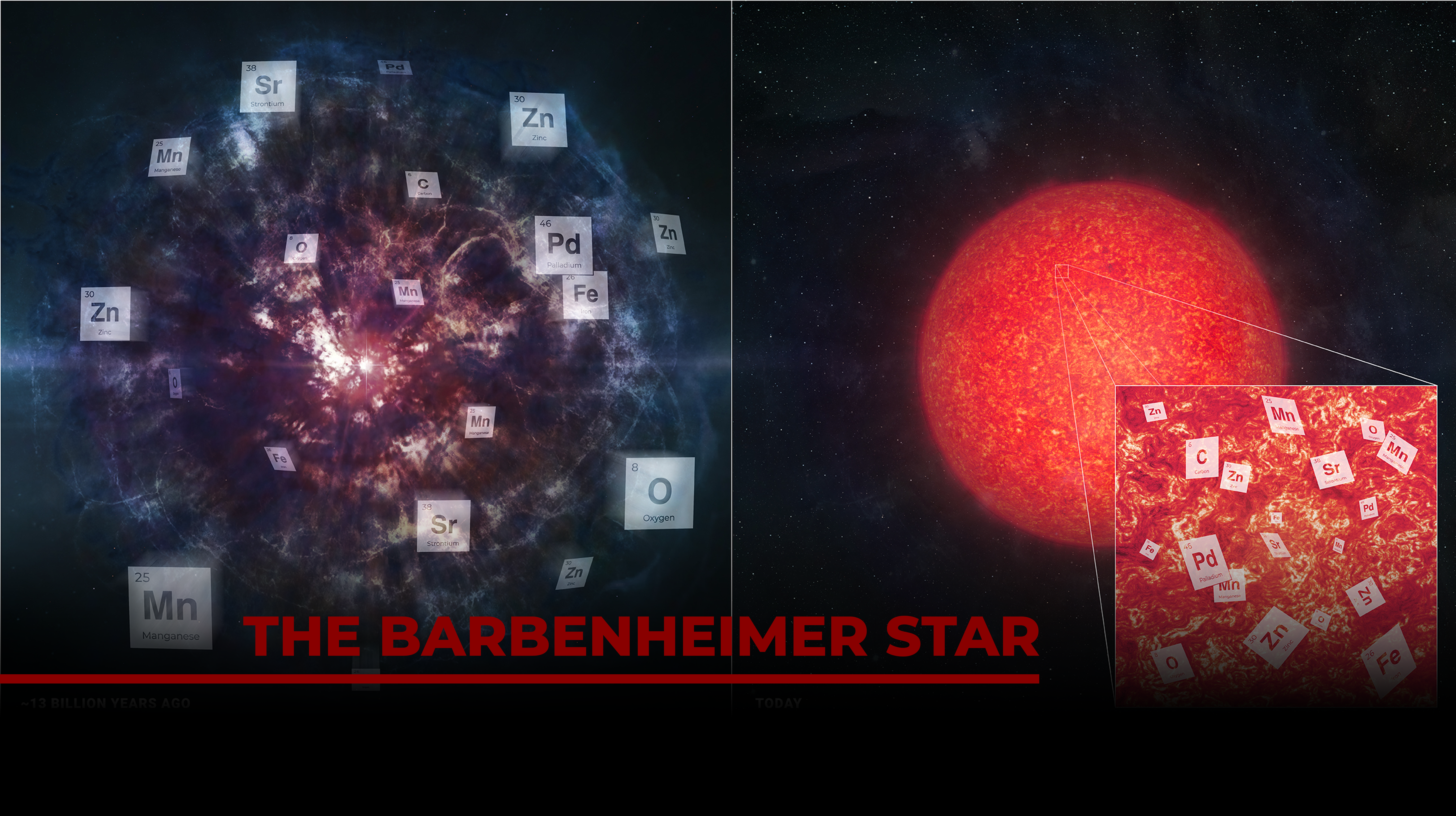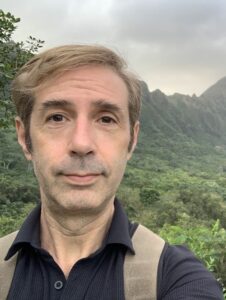
This page originally appeared on @THEU & CoS
Adapted from a release by Jordan Raddick, Sloan Digital Sky Survey press office.
Astronomy’s new blockbuster was announced in New Orleans during the 2024 American Astronomical Society meeting. Astronomers from the Sloan Digital Sky Survey (SDSS) discovered evidence for what they call the “Barbenheimer Star”—an enormous ancient star that exploded in a way previously thought impossible, resulting in an unusual pattern of elemental ashes that left behind a trail of evidence still visible billions of years later.
“We’ve never seen anything like this,” says Alex Ji of the University of Chicago and SDSS, the lead author of the study. “Whatever happened back then, it must have been amazing. We nicknamed it the ‘Barbenheimer Star’ for its spectacular nucleosynthesis.”
Ji and colleagues didn’t see the Barbenheimer Star directly. Instead, they followed the trail back in time using a process called “stellar archaeology.” Just as archaeologists use evidence found in the present to reconstruct the past, astronomers use evidence found in today’s stars to reconstruct conditions in the ancient universe. Today’s stars are like chemical time capsules—they preserve what a piece of the universe was like when the star was born.

“As we continue to map the sky, obtaining millions of spectra across the galaxy and extra-galactic black holes, astronomers are making great strides in adding to our understanding of how objects in the universe evolve,” said Joel Brownstein, research associate professor in the University of Utah’s Department of Physics & Astronomy and co-author of the study.
Brownstein is the head of data for SDSS and runs the Science Archive Server (SAS), which is hosted by the U’s Center for High Performance Computing. The SAS stores data transferred to Utah from the survey’s telescopes at Apache Point Observatory in North America and Las Campanas Observatory in South America. To manage the massive data flow, Brownstein led the effort to manage the pipelines that run on the SAS, which perform the scientific data reductions for shepherding the raw data from the telescopes into usable information, known as spectra, for thousands of SDSS members to access and analyze.
“It’s like making a daily feast,” Brownstein said. “Only a few people might make the meal’s courses, but everyone sits down to dinner. The pipelines are cooked by a few people, but millions of individual spectra and their associated parameters are consumed by thousands of people in the collaboration.”
The many collaborators can access the raw data at any time. Ji, the Barbenheimer Star paper’s lead author, initiated the analysis through the SAS platform.
“We’re all very closely working together. None of that would have been possible without Utah, without this central place where we can share ideas and look at each other’s output,” Brownstein said.
The trail of evidence began with a star that, at first glance, appears unremarkable. The star, called J0931+0038, is a distant, bright red star captured in an SDSS image way back in 1999. Twenty years later, the SDSS telescope turned once again to the star – this time in technicolor. The SDSS Milky Way Mapper program observed the star’s spectrum, which measures how much light the star gives off at different wavelengths. A spectrum can reveal many things about a star, such as its temperature and chemical composition—and it was chemistry that first led Ji and his team of stellar archaeologists to notice J0931+0038.
Stars are mostly made of hydrogen and helium, but they also incorporate some of the heavier elements, which were created in previous generations of stars and released into the universe in supernova explosions. These heavier elements show up as prominent valleys in a star’s spectrum. The SDSS spectrum indicated that J0931+0038 had an unusually low amount of magnesium, prompting further follow up from the Magellan telescopes in Chile. When Ji and colleagues first viewed the follow up spectrum of J0931+0038, they were amazed.
“As soon as I saw the spectrum, I immediately emailed the rest of the team to talk about how to learn more,” Ji said.
Read more @THEU article from Lisa Potter
